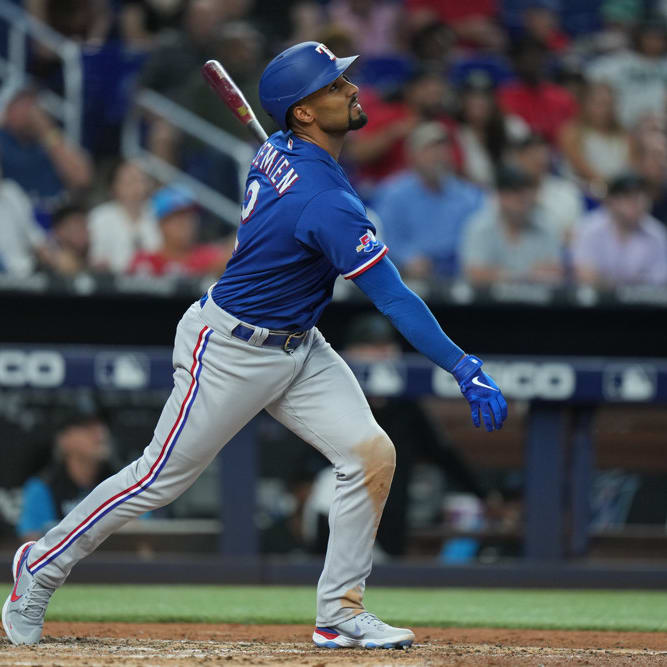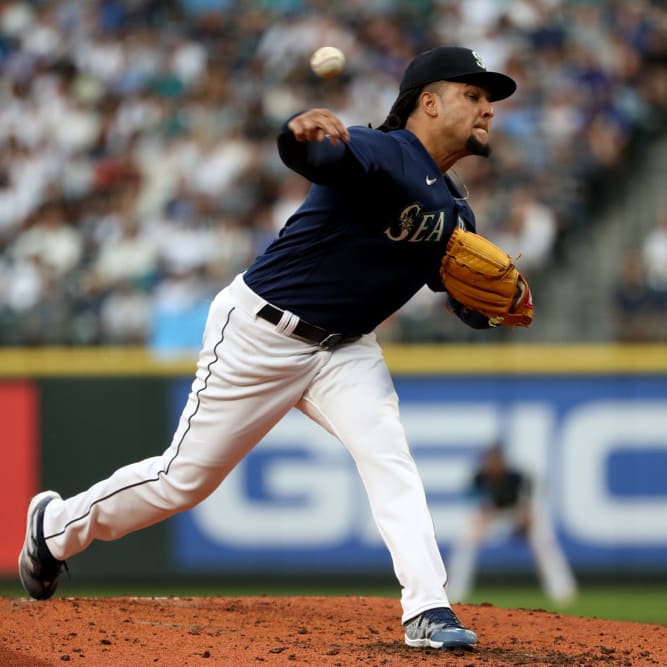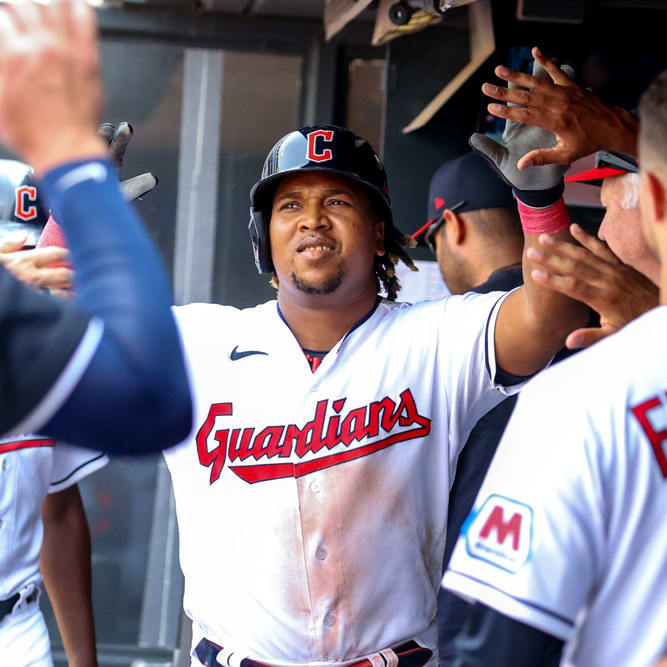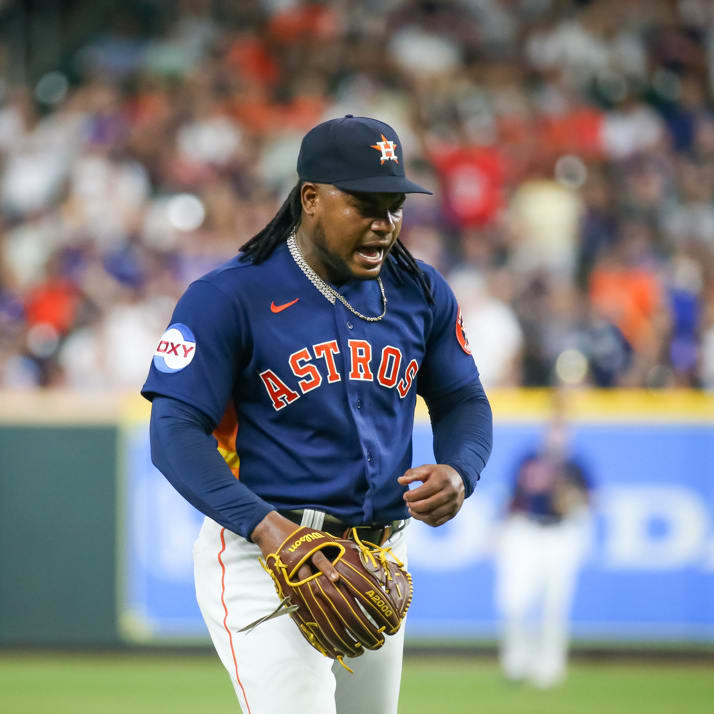This article is part of our The Saber's Edge series.
Every fantasy baseball season, I am either trying my hardest to win a title or looking back at where I went wrong with each team. One place I went wrong this year was guessing which older hitters to target. At a certain age, health effects can really drag down a player's production, but if the circumstances are right the hitter can have a great season. Today, I am going to break down some clues on finding older hitters to target by looking at injuries, time off and physical traits.
Older hitters seems to be harder to predict as baseball moves further and further away from the PED era. Hitters are no longer peaking right before age-30. Instead they almost come into the league at their peak production. Sometimes though, hitters can seem to "break out". Victor Martinez was able to make it through 2014 with no injuries and had a career season. This season, Albert Pujols (35-years-old) is looking like the player the Angels paid for a few season back. Alex Rodriguez (39) and Mark Teixeria (35) are leading the Yankees back to playoffs. On the other hand, several 30 somethings are being a drag for their owners like Adam LaRoche (35), Jimmy Rollins (36), Mike Napoli (33), and Joe Mauer (32).
I went and looked over which older players succeeded in their final seasons and which ones could never get it going. After looking over the breakout players, here are some of my findings.
Rule #1 Ignore disabled
Every fantasy baseball season, I am either trying my hardest to win a title or looking back at where I went wrong with each team. One place I went wrong this year was guessing which older hitters to target. At a certain age, health effects can really drag down a player's production, but if the circumstances are right the hitter can have a great season. Today, I am going to break down some clues on finding older hitters to target by looking at injuries, time off and physical traits.
Older hitters seems to be harder to predict as baseball moves further and further away from the PED era. Hitters are no longer peaking right before age-30. Instead they almost come into the league at their peak production. Sometimes though, hitters can seem to "break out". Victor Martinez was able to make it through 2014 with no injuries and had a career season. This season, Albert Pujols (35-years-old) is looking like the player the Angels paid for a few season back. Alex Rodriguez (39) and Mark Teixeria (35) are leading the Yankees back to playoffs. On the other hand, several 30 somethings are being a drag for their owners like Adam LaRoche (35), Jimmy Rollins (36), Mike Napoli (33), and Joe Mauer (32).
I went and looked over which older players succeeded in their final seasons and which ones could never get it going. After looking over the breakout players, here are some of my findings.
Rule #1 Ignore disabled list days
Once a hitter gets into their 30's, injuries seem to begin to take a toll with a drop in production and missed days. The key is injuries, not so much the age. Rob Arthur at Baseball Prospectus created a formula to estimate days on the DL. The age component to the formula is ".004 *Player's Age". Using that value, here are the days missed just based on age.
Age: Days missed because of age
20: 0.08
25: 0.10
30: 0.12
35: 0.14
40: 0.16
Age is not a major factor, instead previous DL days are the key. Sort of.
Say if 33-year-old player X has missed 90 days on the DL for each of the last three season. How many day should he expect to miss in upcoming season? Most people will probably guess around 90. Using Arthurs' formula, it is only 27 days missed because of injury.
Days missed this year because of injury = .18*(days missed last year) + .1*(days missed two years prior) + .02*(days missed three years prior) + .004*Player's Age
A month is still a significant time and a replacement level player will need to be calculated into the hitter's fantasy value, but a person shouldn't expect him to miss half a season. This was an extreme example and most players will have missed less than 90 days for the past 3 seasons. For a quick way to get the estimated days missed is to double last season's days missed, add in the days missed two seasons ago and then divide by 10. In the above example, the days missed would be (90*2+90)/10 = 27 days
The other key with injuries, an owner just needs to roil with them. They are going to happen and by understanding the potential risk, replacements can be picked up early on.
Rule #2 Look for power hitters, not speedsters
Speed declines quickly and there is no way to really regain it. In all athletes the peak age for speed is around 25-years-old. Once speed is lost it is gone forever. A player's loss of speed can be felt in several game facets. The most obvious is stolen bases. Brad Johnson previously found the peak age for stolen base to be at 25-years-old with a sharp decline after that age. Besides stolen bases, a player's AVG and ISO will begin to drop as the player can no longer leg out infield hits and or turn singles into doubles or doubles into triples. Besides the drop in AVG, they will drive in less RBI and not be on base to score Runs. Finally, they may lose playing time as they have to move off a demanding position like shortstop or center field to another position where their declining bat isn't good enough to play.
With all the speed related factors working against them, they just seem to fall off. Such players are Jimmy Rollins, Shin-Soo Choo, Michael Bourn and Melvin Upton.
A player can maintain their power, unlike their speed, well into their thirties. Ryan Howard (35) and Marlon Byrd (37) have found ways to hit 19 home runs this season. While they don't have a decent AVG, they are at least contributing.
Now keep in mind these players can slump, especially if they are playing through an injury. Miguel Cabrera's 2013 season is a perfect example of this drop. He was having a MVP season with 43 HR going into the last month of the season. In the last month, he hit 1 HR. In all, he only had 2 extra-base hits that month. He admitted to an injury and just fell off. It is important to keep track of possible injuries and be ready to bench these players until the eventually go on the DL to heal where their production turns around.
One item to also keep track of is Contact%. It doesn't matter what the hitter's original Contact% was in their career, the key is the current trend. I look at player who had 30 HR in their age 30 season and then looked at their age 33 season. Those who saw a drop in contact rate saw 51% drop in their home runs rate while those who could keep their contact rate up saw a drop by 45%.
One key with contact rate, it stabilizes quickly in a season for a hitter (40 PA or about 10 games). If a hitter is changing, we should know quickly. Take Albert Pujols for example. Here are his Contact% from the last five seasons along with his HR/FB%.
Season: Contact%, HR/FB%
2011: 87%, 18%
2012: 85%, 14%
2013: 83%, 12%
2014: 86%, 14%
2015: 85%, 20%
Pujols is an example of a hitter keeping his contact skills up and therefore his power. A player who has seen a steep drop in power is Adam LaRoche. His HR/FB ratio is down from 16% in 2014 to 11% this season. Over the same time frame, his Contact% went from 81% to 75%. We should have known he was going to have contact issues in 2015 when he had a Contact% of 68% in April.
Rule 3 Don't ignore players who have missed an entire season
It seems like when a hitter has to take almost entire season off for an injury, most seem to come back completely healthy. I stayed away from Price Fielder, Alex Rodriguez, Manny Machado, Matt Wieters and Jose Iglesias on draft day. Wieters has struggled a bit, but the rest have come back to previous healthy production levels.
The extra time off did them some good. These hitters have had more time to work out, rest, and can come back rejuvenated. Similar players to target in 2016 will be David Wright, Wil Myers, Devin Mesoraco, and Jurickson Profar.
In conclusion, I think older/injury prone players are worth taking a chance on. A few factors help to make certain players more valuable than others. By first ignoring past injuries, owners should concentrate on power hitters who are maintaining their contact skills. Speedy players lose their value earlier in their career and should be ignored. Finally, don't look over players who have missed an entire season. These players usually come at a discount and historically provide quite a bit of excess value.










